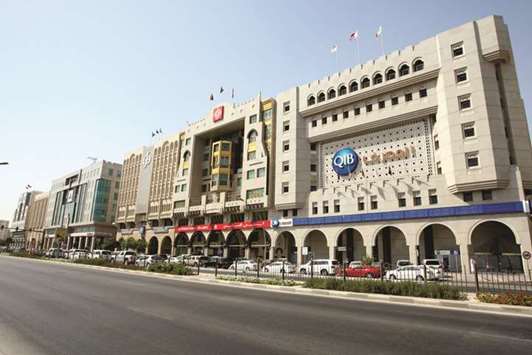Qatar’s domestic banks saw declines in cross-border assets in the Gulf Co-operation Council (GCC), the European and North America; whereas they saw substantial expansion in the other countries, including Asia, during 2017, according to the central bank data.
(Qatar’s) banking sector lowered their cross-border assets, in particular from the GCC region where the decline was the highest (39%), while assets with European countries and North America also shrank 19% and 22% respectively, Qatar Central Bank (QCB) said in its Financial Stability Review 2017.
“As at end December 2017, however, assets with ‘other countries’ including Asian countries grew considerably by 30% thereby increasing their share to total cross-border asset to 21.1%,” it said.
Cross-border credit declined considerably for the GCC and European region, while it grew for other Middle East and North Africa (Mena) region and other countries. Assets with foreign financial institutions (FFI) fell across all regions with the highest decline recorded for the GCC.
Nevertheless, investment assets grew 10% in the GCC region and 69% (from a low base) in the North American region.
Thus, the distribution of cross border assets, especially assets with FFIs changed considerably in 2017, it said.
The report found that in the wake of the regional geopolitical issues, (Qatar’s) banking sector considerably reduced their exposure to the rest of the world.
Consequently, the banking sector cross-border assets declined 14.9% by end December 2017. All other earning cross-border assets, except investments, were seen reducing, it said, adding assets with FFIs reflected major decline among the asset classes, QCB said.
“Banks appear to have responded to the withdrawal of funds from some of the GCC countries, after the unjust embargo, by liquidating their assets with those countries,” it said.
Along with asset, cross border liabilities also posted significant decline. The pace of decline in cross border liabilities was higher than that of assets, it added.
Highlighting that among liability, all sources of external liability declined; it said cross-border deposit fell “significantly” by around 25.2% in 2017, where most of the decline was from the deposits placed by blockading countries.
The decline in cross-border assets resulted in contraction of its share to 16.9%. On similar line the share of cross-border liability also reduced to 26.5% of the total liability.
Along with decline in cross-border assets, the cross border liabilities of the banking sector also fell, it said, adding that the funded liabilities from the GCC countries and other Mena countries declined the maximum at around 55% and 58% respectively.
From the GCC, deposit liability declined by 63% and liability with the financial institutions declined 39%, it said.
On the contrary, from European countries, domestic banks mobilised higher deposits as well as higher funds from the financial institutions, QCB said, adding the share of deposit liability to Europe and other countries increased “significantly”.
The report said the share of funds sourced from European financial institutions increased 13 percentage points while that from GCC region declined 11.4 percentage points.
Business / Business
Qatar banks’ cross-border assets in regions except GCC, Europe and N America grew 30% by end of 2017

Qatar banks’ investment assets grew 10% in the GCC region and 69% (from a low base) in the North American region last year, the QCB says in its Financial Stability Review 2017.

